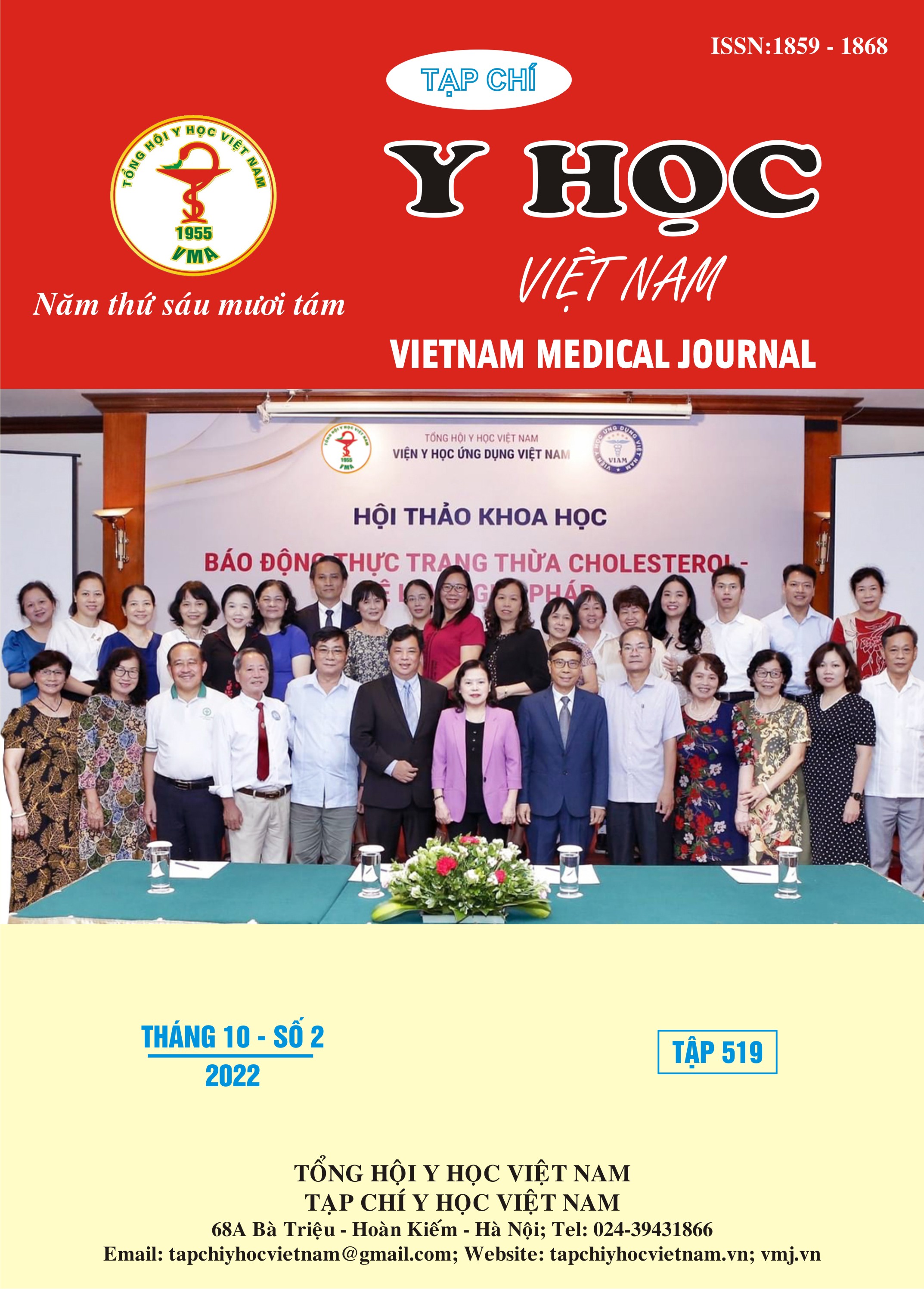EXTERNAL ROOT RESORPTION OF THE SECOND MOLAR ASSOCIATED WITH MESIALLY IMPACTED MANDIBULAR THIRD MOLAR FROM CONBEAM COMPUTED TOMOGRAPHY
Main Article Content
Abstract
Objective: Describe the relationship between morphologically misaligned wisdom teeth and extrinsic resorption of the mandibular second molar roots on Conbeam CT film. Materials and methods: Patients come for dental health examination or diseases related to the maxillofacial region at the Department of Odonto-Stomatology, Hanoi Medical University Hospital and the Center for High-Tech Dental Examination and Treatment, Institute of Odonto-Stomatology , Hanoi Medical University, was assigned to take CT Conbeam film, on the film appeared the image of extrinsic resorption of the roots of the mandibular second molars because the lower wisdom teeth were included in the study sample. Research method: Cross-sectional, prospective, convenient sample selection, patients with CT Conbeam films satisfying the selection criteria were included in the study sample. Results: Out of 120 patients included in the study sample including 120 CT Conbeam images, 122 roots of the mandibular second molars were found to have extradilation, in terms of the location of the appearance, the rate of extraresorption was high. The highest was at the position of 1/3 of the neck with 82 teeth (67.2%), followed by the position of the middle third of 31 teeth (25.4%), and the lowest was at the position of the apical 1/3 consisting of 9 teeth (7.4%). Regarding the degree of external resorption, there were 66 teeth (54.1%) with mild diarrhea, 44 teeth (36.1%) with moderate and 12 teeth (9.8%) with severe. The most common location of root extrinsic resorption is the cervical 1/3 and the middle 1/3 of the root. Severe externalities were common in the apical third, while mild and moderate cases were predominantly in the cervical and mid-root thirds. Conclusion: There is a relationship between the position of the extrinsic position of the root of the mandibular second molar tooth and the eruption position of the mandibular wisdom tooth according to the classification of Pell and Gregory. The severity of the extrinsic root loss is related to the external position. root resorption, while the severity of external root resorption was not related to the age group of the patient.
Article Details
Keywords
cone-beam CT, External root resorption, Impacted third molar
References
2. Lacerda-Santos, J. T. et al. External root resorption of second molars caused by impacted third molars: an observational study in panoramic radiographs. Rev. odontol. UNESP 47, 25–30 (2018).
3. Oenning, A. C. C. et al. External Root Resorption of the Second Molar Associated With Third Molar Impaction: Comparison of Panoramic Radiography and Cone Beam Computed Tomography. Journal of Oral and Maxillofacial Surgery 72, 1444–1455 (2014).
4. Santos, K. K., Lages, F. S., Maciel, C. A. B., Glória, J. C. R. & Douglas-de-Oliveira, D. W. Prevalence of Mandibular Third Molars According to the Pell & Gregory and Winter Classifications. J. Maxillofac. Oral Surg. 21, 627–633 (2022).
5. Smailienė, D., Trakinienė, G., Beinorienė, A. & Tutlienė, U. Relationship between the Position of Impacted Third Molars and External Root Resorption of Adjacent Second Molars: A Retrospective CBCT Study. Medicina 55, 305 (2019).


